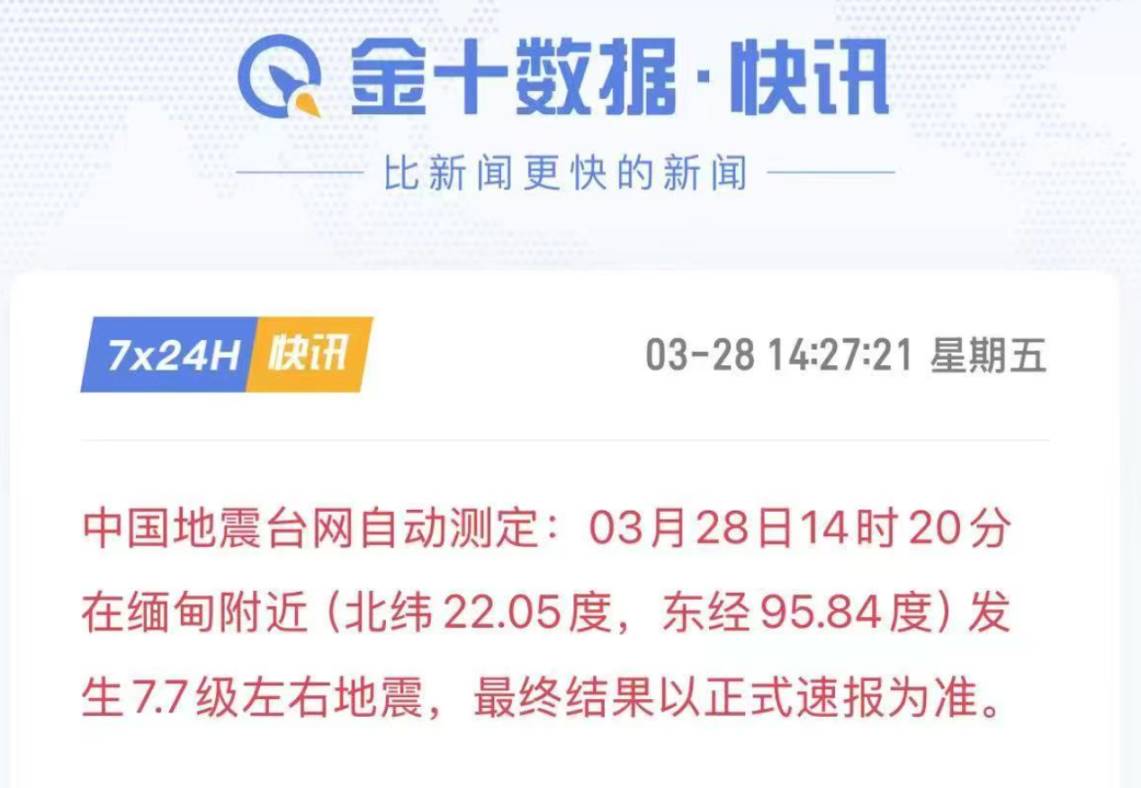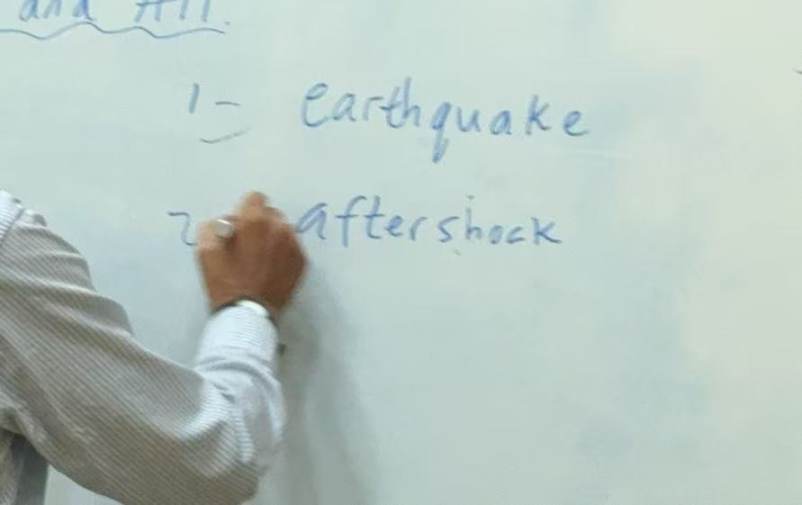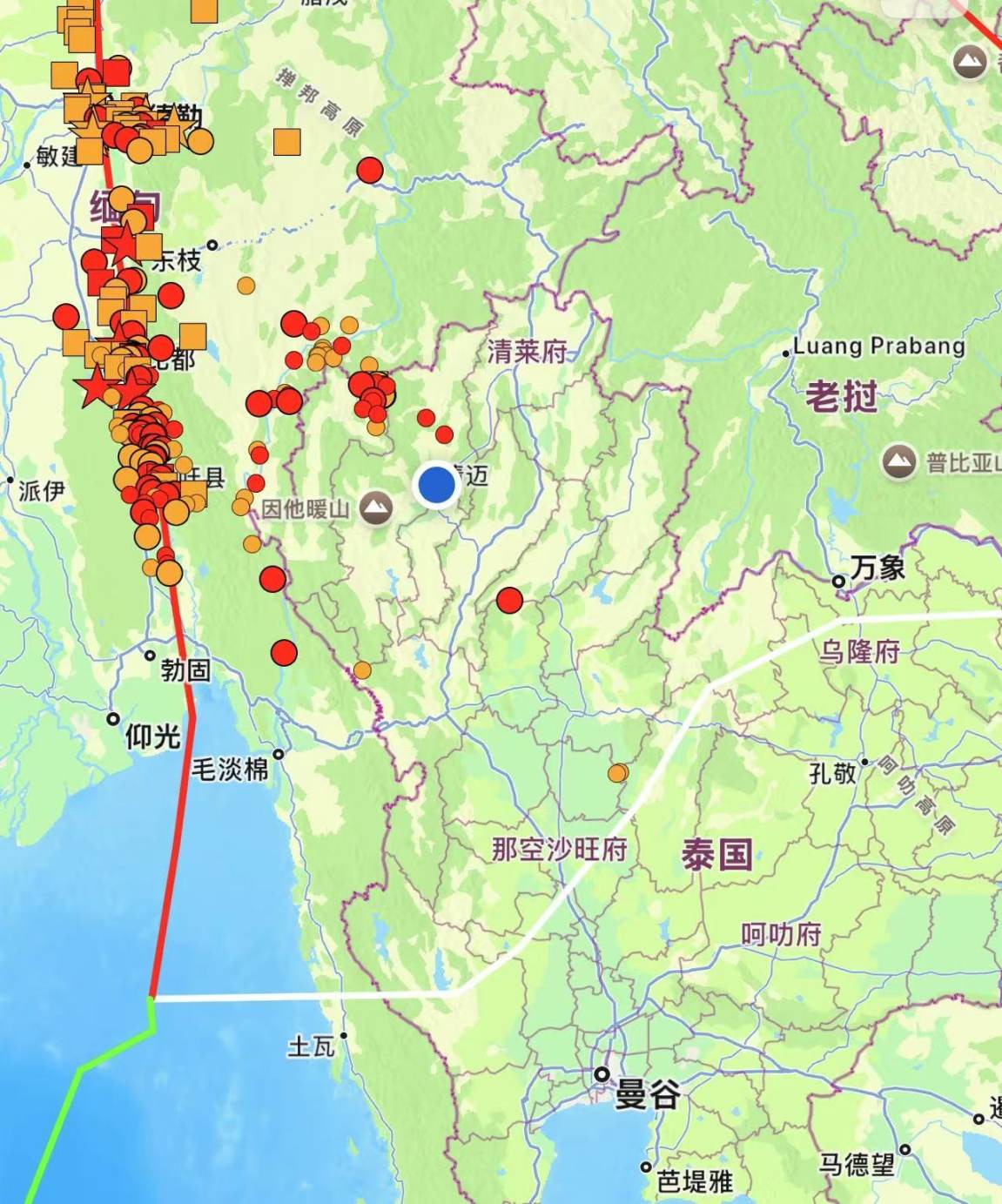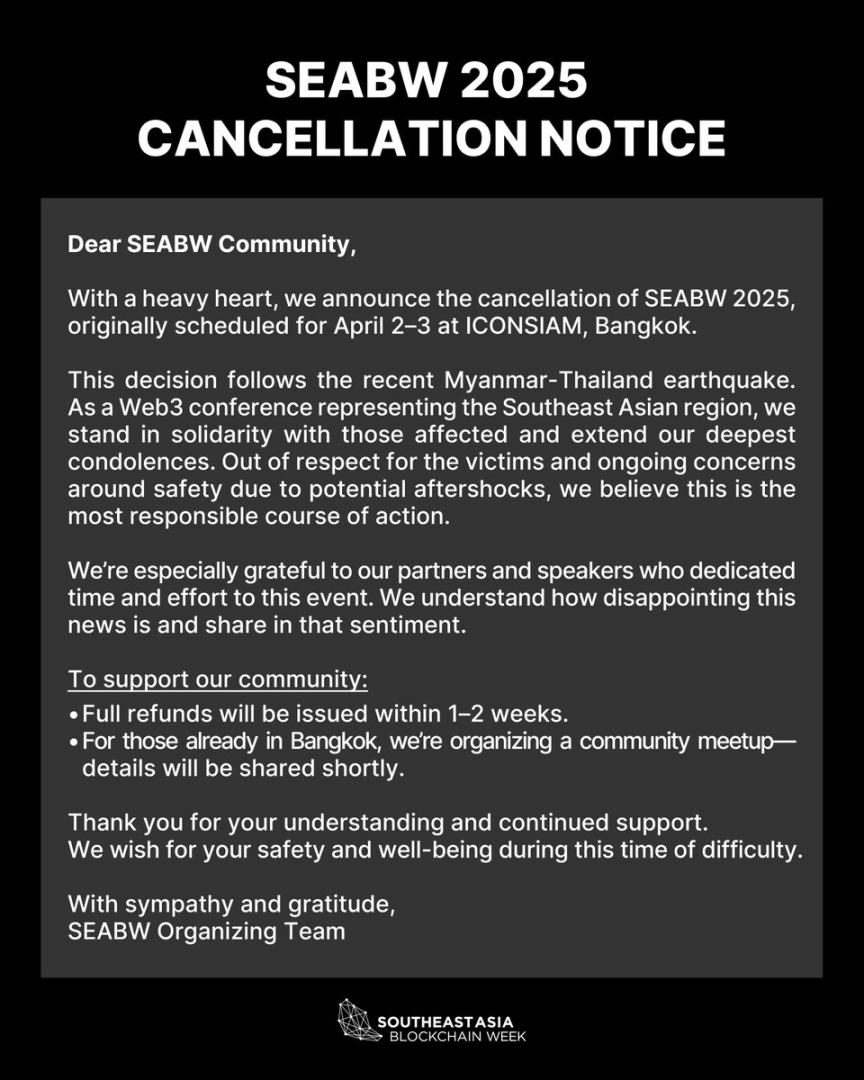Every Web3 person working remotely is their own crisis manager.
Written by: angelilu, Foresight News
When the Earth Shakes: A Special Test for Digital Nomads
On March 28, 2024 (Friday) around 2 PM, a magnitude 7.7 earthquake struck Myanmar, with shockwaves quickly affecting neighboring countries. Four days later, the death toll continued to rise, and rescue workers were still searching for survivors in the rubble. Information about the severity and overall impact of the earthquake, as well as firsthand accounts, seemed to lag behind reality.

The impact of this earthquake was particularly significant in neighboring Thailand, coinciding with the eve of Bangkok Blockchain Week, where many Web3 practitioners gathered in Bangkok and Chiang Mai, all closely monitoring the disaster's developments. As a firsthand witness in Chiang Mai, I intended to document this experience immediately, but I found it difficult to concentrate due to dizziness and weakness in my limbs after the quake.
On the first day after the earthquake, reports about the disaster area in Myanmar were scarce, while the situation in Bangkok was clearer. Initially dismissive, I grew increasingly anxious as related news began to accumulate. In recent days, I often experienced "phantom tremors," where the sound of motorcycles passing outside and slight vibrations from the ground made me suspect aftershocks were coming; at night, I would often wake up startled by what I couldn't tell was real shaking, frantically grabbing my phone to refresh earthquake monitoring websites, searching for that possibly nonexistent aftershock record.
In the face of unease, understanding the full scope of the event is the best remedy. After gathering information and communicating with others, I compiled this article in hopes of providing some reference and comfort to those who also experienced this earthquake.
Epicenter Notes: The Moment the English Class Was Shaken
The main reason for my visit to Chiang Mai was to learn English in person. That day, I was sitting in a classroom at an English institution, focused on my studies. Suddenly, the desks and chairs began to shake slightly, and the tremors gradually intensified. Everyone's reaction seemed a bit sluggish, as if they were pondering whether this was really an earthquake. A few quick-thinking Chinese students immediately dove under their desks for safety, while our British teacher looked confused, clearly unfamiliar with such phenomena. When the first wave of shaking subsided, I immediately suggested, "We should go outside to an open area!" A classmate in the same row turned to grab their backpack, and I hurriedly stopped them, saying, "Just go outside; it's fine to take your phone."
Chiang Mai primarily consists of single-story buildings, which turned out to be our good fortune at that moment. As we rushed outside, a group of people was already standing there, their expressions varied but equally anxious. The usually calm fish pond in front of the building was now churning with waves, like a coffee cup violently shaken by an invisible hand, with water splashing against the pond's walls. Everyone pulled out their phones, contacting friends and family to confirm safety while searching for earthquake-related news.
Under the blazing sun, the heat outside in Chiang Mai quickly became unbearable. When everything seemed to calm down, we returned to the classroom to continue the lesson. In this English class, we temporarily learned two new vocabulary words: "earthquake" and "aftershock." Soon after, a noticeable aftershock hit again, and we hurriedly evacuated the classroom once more. At that time, I found earthquake-related news on my phone: the epicenter was located in Mandalay, Myanmar, 494 kilometers away from Chiang Mai. All the complex panic ended in that English class, after which I met up with friends to chat and have dinner with new acquaintances.

Code and Aftershocks: The Earthquake Moments of Web3 Peers
During our conversations, I learned that a considerable number of Web3 practitioners had gathered in Chiang Mai. When the earthquake's shockwaves penetrated the city, there was no unified emergency plan for remote-working Web3 professionals, no company safety officer directing them, and no practiced evacuation routes. Everyone became their own crisis manager, improvising their own response strategies.
On social media, a user shared his textbook-like emergency response: upon feeling the first tremor, he immediately grabbed all his electronic devices, rushed downstairs, and made it to an open area in under 20 seconds.
However, not everyone could remain so calm. A friend admitted that in the chaos, he couldn't even put on his clothes properly— the more nervous he became, the less his fingers obeyed him, and simple actions became extraordinarily difficult in a crisis. Another practitioner shared that he was in a meeting and could only run outside clutching his laptop. A developer mentioned that his first reaction was to save his code, and a team that had planned to release a new version at that time had to delay it due to the earthquake.
Long-term nomads expressed that there might be moments when they suddenly miss home, experiencing the bittersweetness of wandering. In various local chat groups in Chiang Mai, practical information was rapidly disseminated: from aftershock warning times to earthquake safety tips, everyone tried to help each other as much as possible.
Although Chiang Mai is one of the closest Thai cities to Myanmar, fortunately, most buildings are single-story, and the actual damage was not extensive. A few high-rise residential buildings experienced issues like bent structural columns and cracked walls, leading to temporary evacuation orders. Some mutual aid groups were also offering their spare single-story homes and villas to residents unable to return to high-rise buildings.

Impact on Bangkok: The Ripple Effect Beyond the Epicenter
In comparison to Chiang Mai, the disaster situation in Bangkok was more severe. Despite being over 1000 kilometers from the epicenter, a 30-story unfinished building in Bangkok collapsed under the shockwaves. Additionally, the tremors were particularly strong in high-rise buildings, with water from the infinity pools on the top floors of several luxury hotels splashing down like waterfalls onto the streets below, creating one of the most visually shocking scenes of this earthquake.
Why was Bangkok so severely affected? Seismologists pointed out several key factors: first, the earthquake's epicenter was very shallow, only 10 kilometers deep, significantly increasing the intensity of ground shaking; second, the energy released by this 7.7 magnitude earthquake exceeded that of the Hiroshima atomic bomb; and most critically, the fault line where the epicenter was located extended in a straight line, like a highway, efficiently transmitting massive energy over a distance of 1200 kilometers to Thailand. The geological conditions in Bangkok further exacerbated the situation—this city is built on soft sedimentary layers, resembling a giant jelly, which amplified the seismic waves instead of dampening them.
Many users on social media reported that the earthquake caused a near-total paralysis of urban traffic in Bangkok, with subway services suspended and road congestion lasting for hours, turning a typical half-hour commute into a long, torturous four to five-hour ordeal.
The Southeast Asia Blockchain Week (SEABW), originally scheduled for the following week (April 2-3) in Bangkok, had to be urgently canceled. The official statement indicated that they would use their channels to help connect affected individuals, although some surrounding events were still planned, with expected participation numbers significantly reduced.

On-Chain Action: The Power of Community in Crisis
The perspectives above are just an unfortunate yet fortunate snapshot of this disaster. On the other side of the border, the situation in Myanmar is more severe, with this earthquake being the strongest in Myanmar since 1912, resulting in at least 2000 deaths, a number that continues to rise. In the face of this disaster, what can the Web3 industry do?
On March 29, Binance founder Zhao Changpeng announced that he would donate 500 BNB each to Myanmar and Thailand, stating that if there was no existing system, they would rely on Binance and its Thai branch for fund distribution. Binance Charity and the Czech Republic jointly donated $1.5 million to directly support affected users.
The IOST Foundation stated, "Web3 is not just about code and assets—it’s also about people," and established two transparent donation contracts, promising that "100% of donations will be directly used for local disaster relief," and stated that "the IOST Foundation will provide matching donations."
According to Decrypt, several international humanitarian organizations have opened channels for cryptocurrency donations, including:
Red Cross (accepting BTC, BCH, ETH, and various stablecoins)
Save the Children (accepting Bitcoin, Ethereum, USDC)
British Red Cross (accepting over 70 cryptocurrencies and tokens)
UNICEF (accepting Bitcoin and Ethereum)
Doctors Without Borders (accepting donations through The Giving Block)
Donations are undoubtedly the most direct application of blockchain technology in the current context. When infrastructure is severely damaged and traditional banking systems are temporarily paralyzed, cryptocurrencies demonstrate their unique advantages as emergency aid tools.
As we contemplate what blockchain can do for this world, perhaps the answer lies in tangible humanitarian applications. Beyond direct financial donations in times of disaster, can it serve as a tool for rebuilding trust, connecting resources, and empowering communities? Decentralized emergency communication systems, resource coordination platforms that do not rely on traditional infrastructure, and truly transparent disaster relief fund tracking mechanisms…
免责声明:本文章仅代表作者个人观点,不代表本平台的立场和观点。本文章仅供信息分享,不构成对任何人的任何投资建议。用户与作者之间的任何争议,与本平台无关。如网页中刊载的文章或图片涉及侵权,请提供相关的权利证明和身份证明发送邮件到support@aicoin.com,本平台相关工作人员将会进行核查。




